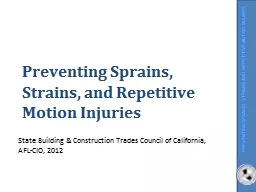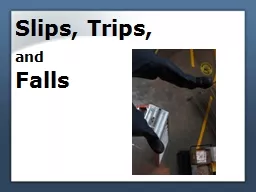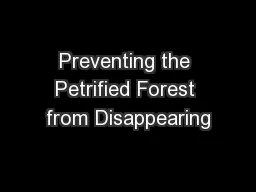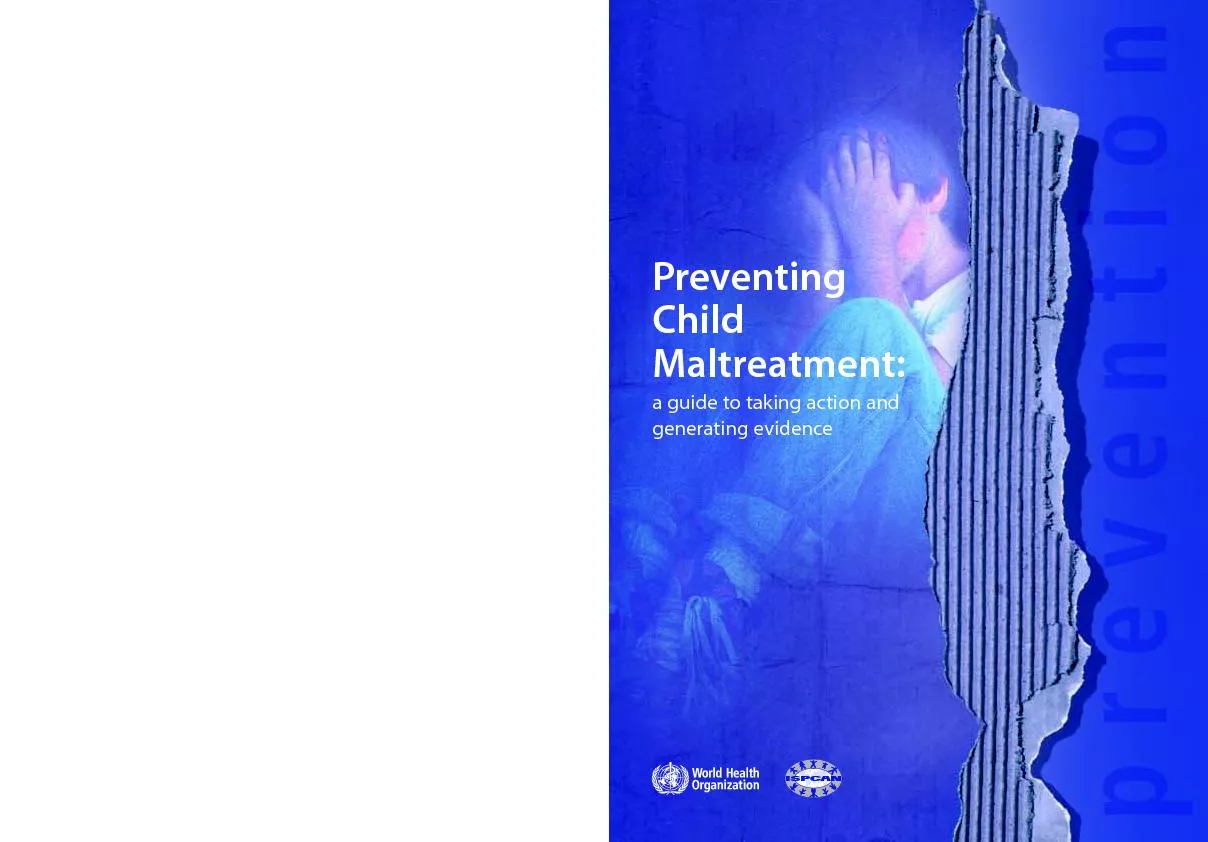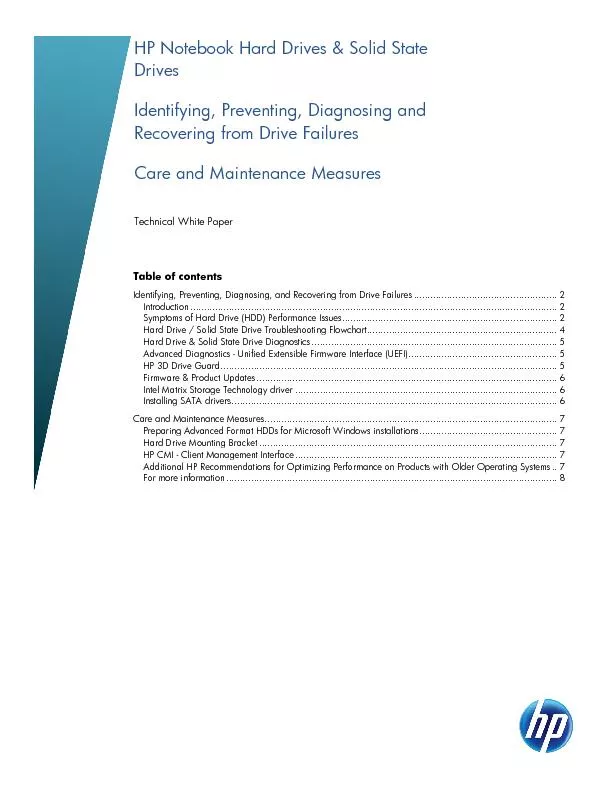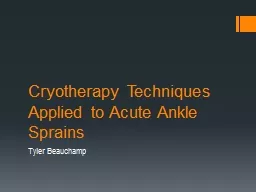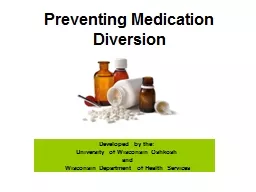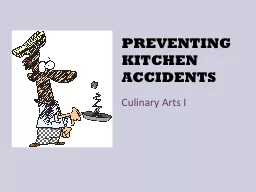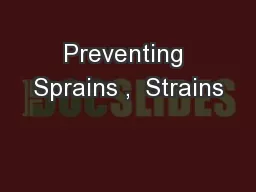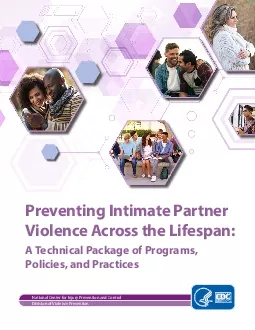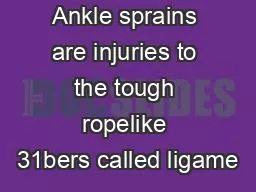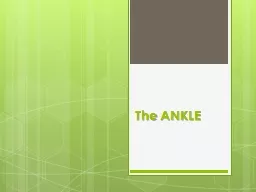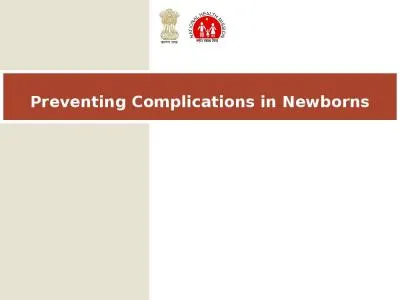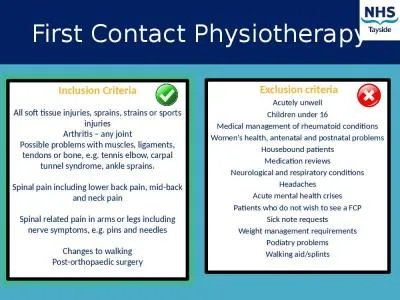PPT-Preventing Sprains ,
Author : luanne-stotts | Published Date : 2019-11-23
Preventing Sprains Strains and Repetitive Motion Injuries State Building amp Construction Trades Council of California AFLCIO 2012 OSHA Grant Number T his material
Presentation Embed Code
Download Presentation
Download Presentation The PPT/PDF document "Preventing Sprains ," is the property of its rightful owner. Permission is granted to download and print the materials on this website for personal, non-commercial use only, and to display it on your personal computer provided you do not modify the materials and that you retain all copyright notices contained in the materials. By downloading content from our website, you accept the terms of this agreement.
Preventing Sprains ,: Transcript
Download Rules Of Document
"Preventing Sprains ,"The content belongs to its owner. You may download and print it for personal use, without modification, and keep all copyright notices. By downloading, you agree to these terms.
Related Documents

